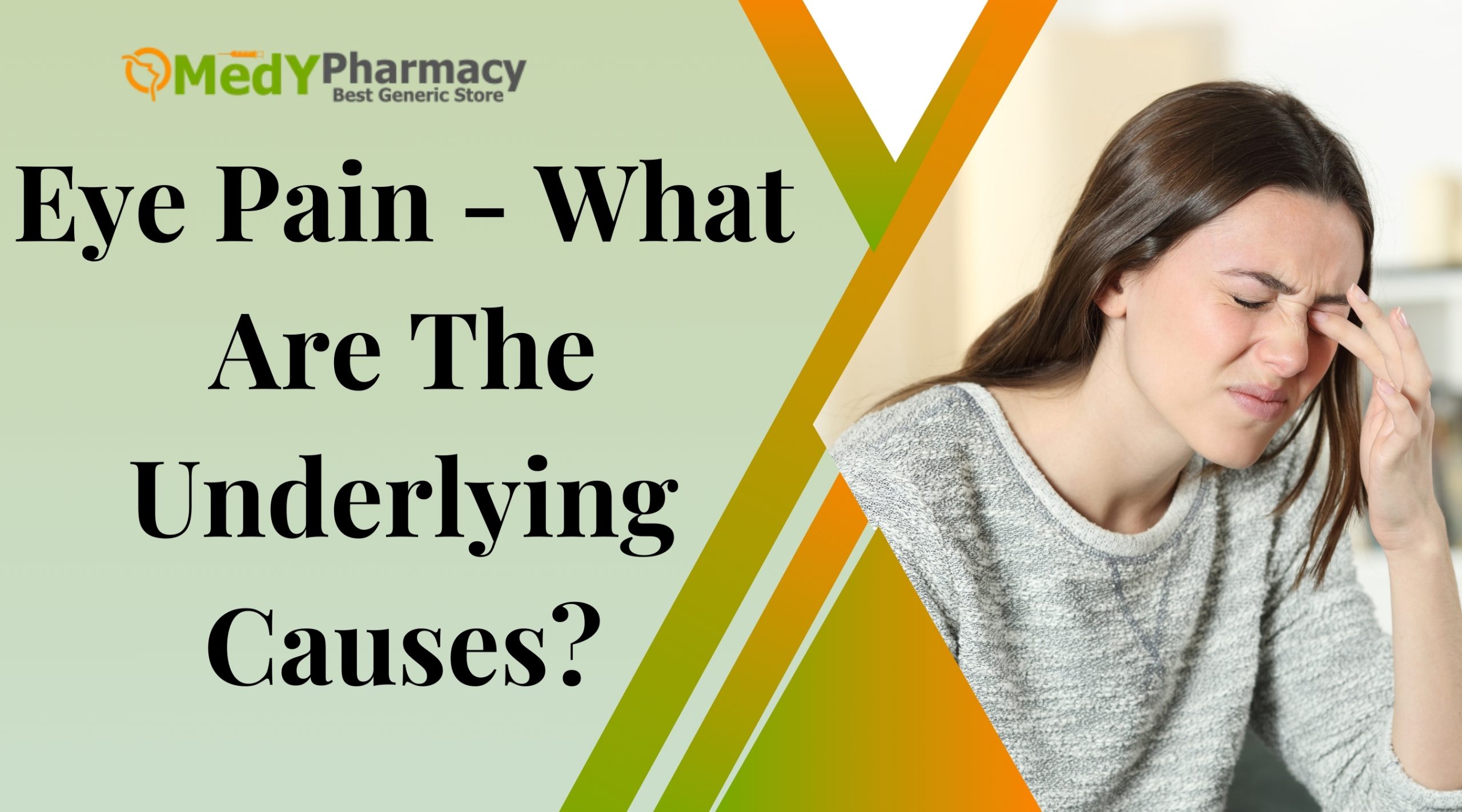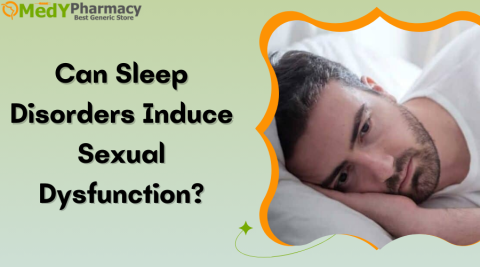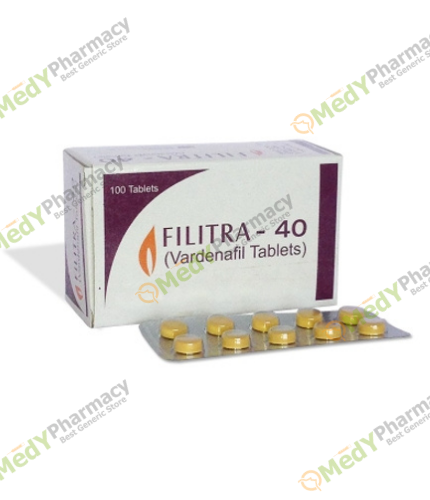Introduction:
Many of us deal with the frequent problem of eye pain in one or both eyes. This condition may arise as a result of an illness or damage. But it can just be the first indication of an eye condition or excessive eye strain.
When the proper remedy is given at the right time, the problem can be resolved. Your physician may recommend Careprost eye drops, eye protection, home treatments, or even surgery to address this.
An acute ache in the eye or a dull pain that lasts all day are common occurrences. Do not forget that this type of problem is somewhat more serious than an inconvenience. One of the most frequent causes of this is often the amount of time we spend staring at computer or smartphone screens.
The best course of action, if the problem is minor, is to get adequate sleep or wipe your eyes often with clean water. On the other hand, the more severe type of eye discomfort frequently lasts longer and may also cause other symptoms.
Either one or both eyes may be affected. Among the causes of eye discomfort include infections, inflammation, and injuries. Depending on what is causing your eye pain, treatment options may include eye drops, eye shields, or surgery.
Irritation, infection, or trauma are the most common causes of surface discomfort. Eye drops or relaxation are frequently effective treatments. More extensive therapy could be necessary because this is deeper in the eye. An emergency is any discomfort that is accompanied by visual loss.
Although this is frequent, it is rarely a sign of a serious illness. Ophthalmalgia is another name for this.
This may be classified into two types based on where it is felt: orbital pain, which happens inside the eye, and ocular pain, which occurs on the surface of the eye.
Itching, burning, or scratching are some of the symptoms of surface eye discomfort. A deeper level of eye discomfort might be throbbing, stabbing, gritty, or painful.
Loss of eyesight along with this might indicate a serious medical problem. If you start to lose your eyesight while you have eye discomfort, call your ophthalmologist right away.
What Is Eye Pain?
You may characterize eye discomfort as throbbing, painful, or acute. Both eyes and just one eye might experience it. You may also use the location of your eye discomfort, such as the area behind your eye, to explain it.
This goes beyond the minor annoyance that comes with getting an eyelash or a bit of grit in your eye. You may have eyestrain from gazing at a computer all day, but this goes beyond that. In some situations, your eye feels better once the lash or debris has been removed, or when you close your eyes or use a cold compress to rest them.
This is more severe is severe, persistent, and may accompany other symptoms. This may occasionally indicate an underlying medical condition or damage. A new eye ache or one that continues getting worse should be discussed with a healthcare professional as soon as possible.
Stinging, scorching pain, or even tiny lumps or sensations of a foreign body in the eye are some of the symptoms that may manifest on the outside or inside of the eye.
This is a typical issue that is seldom significant. Trauma, infection, or foreign bodies are the most common causes of surface eye discomfort. Usually, it is more severe and bothersome when the discomfort is centered in the inner area of the eyes.
One may have slight irritation of the surface of the eye or the feeling of something alien in the eye, or it may be severe and appear sharp, hurting, or throbbing. Red eyes are a common side effect of many eye discomfort conditions. Depending on what is causing the eye discomfort, other symptoms could be present. People may experience a bulging eye, impaired vision, or pain that is exacerbated by bright light, for instance.
The cornea is extremely pain-sensitive. The anterior chamber is also affected by several corneal diseases, which can result in spasms of the iris-controlling muscle. Bright light increases muscular tightness and exacerbates discomfort when such spasms occur.
Infections, conjunctivitis, or dry eye syndrome can all cause pain in your left eye. Optic nerve problems, sinus infections, and headaches can also be uncomfortable. The sort of pain you have and additional symptoms, including headaches or light sensitivity, might help your healthcare professional determine the reason.
Pain in the corner of your eye, for example, might be a sign of blepharitis, a style, or an infection of the tear duct. Sharp discomfort may indicate uveitis or corneal abrasion, whereas pressure in the deepest part of the eye may indicate optic neuritis or glaucoma. Immediately seek medical help if eye discomfort persists for several hours, is accompanied by trauma or vision loss, or does not go away with home remedies.
Who Is At A Higher Risk Of Developing Eye Pain?
Anyone can have injury-related eye pain, especially if they don’t use protective eyewear when engaging in eye-risky activities.
Discomfort and pain are caused by a disorder in which the eyes either produce insufficient tears or the tears evaporate too rapidly. This is frequently the result of optic nerve injury brought on by elevated intraocular pressure.
People who use computers, cell phones, or other electronic devices for extended periods are more prone to experience eye strain, dry eyes, and discomfort, which can occasionally turn into pain. Conditions including cataracts, macular degeneration, and dry eyes can become more common as people age and can be uncomfortable.
This headache symptom is frequently accompanied by severe or throbbing pain behind or around the eyes. It’s critical to get medical help if you’re having severe or ongoing eye discomfort to identify the reason and the best course of action.
Where In Your Eye May You Be Experiencing Pain?
Pain in practically any area of your eyes can be referred to by this, including:
- The lid of your eye.
- One membrane that shields your eye is called the conjunctiva.
- Your eye’s cornea is the transparent dome that aids in focus.
- The space in your skull where your eye is held is called your orbit.
Your healthcare professional can identify the reason for your eye pain if you can describe where it occurs.
What Results In Eye Pain?
The following factors may contribute to surface-based eye pain:
- Foreign object
This is most often caused by merely having anything in your eye. An eyelash, a particle of dirt, or mascara can all cause irritation, redness, watery eyes, and discomfort when it gets stuck in the eye.
- Conjunctivitis
The tissue that borders the front of the eye and the bottom of the eyelid is called the conjunctiva. It is susceptible to infection and inflammation. Usually, an illness or allergy is the cause of this.
Even while the pain is typically not severe, the inflammation makes the eye itchy, red, and discharge.
- Contact lens irritation
People are more prone to eye pain from irritation or infection if they use contact lenses overnight or don’t properly clean them.
- Corneal abrasion
Damage to the cornea, the transparent layer of the eye, is possible. You will get the sensation of something in your eye when you have a corneal abrasion.
However, if you have a corneal abrasion, the pain and suffering won’t be lessened by normal eye care procedures like water cleansing.
- Injury
Significant discomfort can result from chemical burns and flash burns to the eye. Frequent causes of these burns include exposure to harsh light sources like the sun, tanning facilities, or arc welding materials, as well as irritants like bleach.
- Blepharitis
Infection or inflammation of the oil glands on the border of the eyelid results in blepharitis. It may hurt to do this.
- Sty
The eyelid may develop a nodule or elevated lump due to blepharitis infection. We refer to this as a chalazion or sty. A sty can cause excruciating discomfort, and the surrounding tissue is typically extremely sensitive and fragile. Chalazion is often painless.
What Is The Source Of Orbital Pain?
The following illnesses may be the source of eye discomfort that is felt inside the eye:
- Glaucoma
The following are other signs of glaucoma: headache, nausea, and vision loss.
To prevent irreversible vision loss, acute angle closure glaucoma, a rapid increase in pressure, requires prompt medical attention.
- Optic neuritis
If the optic nerve, which runs from the back of the eyeball to the brain, gets inflamed, you may encounter eye discomfort and vision loss. The inflammation may be brought on by an autoimmune condition or a viral or bacterial infection.
- Sinusitis
The accumulation of pressure behind the eyes may be caused by a sinus infection. It might cause discomfort in one or both eyes as it does.
- Migraines
One typical side effect of migraine bouts is eye discomfort. A common symptom of migraines is pulsing or throbbing pain that radiates to the forehead, temples, and eyes. This pain may get worse with movement, light, or sound, and it may be mild, acute, or strong.
People who get migraines may have a strained or heavy feeling around their eyes. Although this is commonly mistaken for a main eye issue, it is a component of the migraine experience as a whole.
- Injury
A person may have severe eye discomfort from penetrating injuries to the eye, which can happen when they are struck by an item or are in an accident.
Depending on the foreign object’s size and placement, a medical professional could assist in its removal. Sometimes saline solution can be used to wash the item away.
Following eye surgery or trauma that has resulted in healing or inflammation, such as cataract surgery, pain may also be experienced.
- Iritis
Iris inflammation is rare, yet it can hurt deep into the eye. Iritis, commonly referred to as anterior uveitis, is an inflammation of the eye’s colorful iris. It may impair eyesight if left untreated and can cause severe eye discomfort in addition to other symptoms. Uveitis is an inflammation of the main layer of the eye called the uveal tract, and iritis is one of its forms.
Through a thorough eye exam, an eye care practitioner can typically identify iritis. They could examine the anterior chamber of the eye using a slit lamp to check for inflammation.
Who Is at Risk for Eye Pain?
Everyone can have eye pain, regardless of age, as we previously explained. As you can see, that may happen if you have
- An eye injury
- A symptom of an eye condition
- Putting the eyes under excessive strain
When Is Eye Discomfort A Serious Problem?
A medical emergency may be indicated if you start to lose your eyesight in addition to eye discomfort. Other signs that require prompt medical intervention include:
Intense eye ache. Eye pain brought on by trauma, chemical exposure, or light stomach ache and vomiting, eye pain so bad that it’s hard to touch the eye, abrupt and drastic changes in vision.
Which Eye Parts Are Potentially Painful?
Scientists at an eye care research facility in the United States have done many studies among individuals who have an eye condition or damage, or who use cell phones often. Research indicates that the following areas of the eyes are more likely to experience pain, based on patient reports of Bimatoprost:
- Eyelids
- Conjunctiva
- The sclera or the white part of your eyes
- Cornea
- Eye socket
How Will Your Doctor Determine The Cause Of Your Eye Pain?
Usually, the first thing a clinician will ask you is about your symptoms and medical history.
- Your eye discomfort began when?
- How is the ache in your eyes?
- Where does it pain in your eye?
- Have there been any injuries or potential foreign bodies in the past?
- You use contact lenses, right?
- What additional symptoms are you experiencing?
They will also do a thorough eye examination. They will examine the eye using instruments such as microscopes. It is conceivable that the provider will dilate your pupils using drops to do a comprehensive assessment.
Which Factors Are Most Frequently Responsible For Eye Pain?
Eye discomfort can result from a variety of circumstances and causes. They may consist of:
- Diseases
Rubbing your hands against your eyes or putting them close to them can spread germs, fungi, or viruses. Additionally, infections can travel to your eyes from other parts of your body.
- Contact lenses
Your eyes may hurt if your lenses are unclean or poorly fitted. Other factors that might cause eye issues include using contact lenses for longer than is recommended or failing to replace them on time. Never wear contact lenses that your doctor hasn’t recommended for you.
- Intolerances
Allergies to dust, pollen, or animals can cause irritation, itching, and sometimes discomfort in your eyes.
- Pollutants
Exposure to air pollution, cigarette smoke, chlorine in swimming pools, and other dangerous substances can irritate your eyes.
- Inflammation
Your eye may enlarge or change color as a result of inflammation, an immunological system reaction. Your eye may hurt, the white portion of it may become red, and you may become extremely light-sensitive.
- Elevated intraocular pressure
This may occur if the moisture in your eye does not drain enough.
How Your Eye Pain Will Be Diagnosed by a Physician
The first thing a doctor will frequently do when you visit them is to discuss a few topics with you, such as
- When did you first notice eye pain?
- Is the discomfort more constant or does it happen only occasionally?
- In which area of the eye is the pain?
- To what extent is the pain?
- Was the patient hurt in any way?
- Does the patient currently wear contact lenses and have any vision problems?
- Was the patient’s eye injured?
- Does the patient spend a lot of time staring at the computer screen?
What Is The Sensation Of Eye Pain?
This is described by people in a variety of ways, such as feeling:
- Your eye has something in it. You may also describe your eye as feeling sandy or grainy.
- A dull throb or an inward pressure against your eye.
- It is swollen in your eye.
- Eye discomfort that is either stabbing or shooting.
- It’s burning in your eye.
What Is The Treatment For Eye Pain?
The reason for eye discomfort determines how it should be treated. The most popular therapies consist of:
- At-home care
For many eye discomfort disorders, resting your eyes is the best course of action. Because staring at a computer screen or television can create eyestrain, your doctor could prescribe a day or longer of relaxation with your eyes covered.
It’s crucial to recognize when professional medical intervention is necessary, even while at-home treatment for eye pain can help reduce moderate discomfort and encourage recovery.
Dry, irritated eyes might benefit from the moisture that over-the-counter lubricating eye drops offer. To prevent chemical irritation from some formulations, use drops without preservatives.
- Glasses
Wearing your glasses will allow your corneas to recover if you utilize contact lenses regularly.
It’s crucial to consult an eye care specialist if glasses are causing severe eye pain or discomfort, or if the pain continues even after taking the recommended medication, to rule out any underlying medical issues.
To make sure the frames fit properly and distribute pressure equally, contact your optician to make any necessary adjustments if your glasses are uncomfortable.
- Warm compress
Physicians may advise patients with blepharitis or a sty to place warm, wet cloths over their eyes. By doing this, the clogged hair follicle or oil gland will be cleared.
Eye discomfort, dryness, and irritation are just a few of the symptoms that can be easily and successfully treated at home with a warm compress. The warmth improves circulation and increases oil secretion from the eyelid glands, which helps to calm and relax the eyes, lessen inflammation, and accelerate healing.
After applying the compress, you may use fresh, soft tissue to carefully remove any extra oil or dirt from your eyelids. Using a light baby shampoo diluted with water or a recommended lid scrub to clean the edges of your eyelids may be helpful if you’re treating diseases like blepharitis or sties.
- Flushing
Wash your eye with water or a saline solution to remove any irritants that may have entered it, such as chemicals or foreign objects.
To get rid of irritants, foreign objects, or toxins from the eyes, it’s crucial to flush them with water or a saline solution. It can lessen pain and stop more harm from happening. Flushing the eyes is particularly helpful when handling dust, chemicals, allergies, or tiny particles that may have gotten into the eye.
Flush the eyes with an eye wash bottle or station, if one is provided. There are eye wash facilities in many labs and workplaces in case of chemical exposure. Position yourself so that you can easily flush your eye, either sitting or standing, ideally over a sink or basin.
- Antibiotics
Conjunctivitis and corneal abrasions are two eye illnesses that can be treated with antibacterial drops and oral medicines if they are causing pain.
Eye infections caused by bacteria that can result in discomfort, redness, and other symptoms are treated with antibiotics. They are successful in lowering inflammation, encouraging healing, and stopping the infection’s spread. However, viral infections and non-infectious causes of eye discomfort cannot be treated with antibiotics; they are only useful for bacterial eye infections.
When it comes to treating bacterial eye infections, antibiotics are an essential tool since they assist in reducing swelling, relieving eye discomfort, and avoiding consequences. But they should be used sensibly, and for the greatest results, you must carefully follow your doctor’s directions.
- Anti-histamines
Eye discomfort from allergies can be lessened with the use of eye drops and oral medications. Antihistamines are drugs that are frequently used to treat allergic responses that can hurt and irritate the eyes, particularly when such reactions result in symptoms like watery eyes, redness, swelling, and itching. They function by inhibiting the effects of histamine, which is a chemical that the body produces during an allergic reaction and is in charge of generating discomfort and inflammation.
- Eye drops
Medication eye drops can help glaucoma sufferers lower the pressure that builds up in their eyes. For many forms of eye pain, irritation, dryness, or discomfort, eye drops are a popular and efficient remedy.
Squeeze as many drops as instructed into the pocket your lower eyelid has formed.
- Corticosteroid hormones
In cases of more severe infections, such as anterior uveitis (iritis) and optic neuritis, your doctor could prescribe corticosteroids.
A family of drugs known as corticosteroid hormones, or steroids, are used to treat several illnesses that might cause eye irritation and to lessen inflammation. Because they inhibit the immune system and reduce the inflammatory response, they are useful in treating a variety of eye conditions where inflammation is a major problem. However, because of their strong effects, corticosteroids need to be taken carefully and under a doctor’s supervision, especially when administered in the eye.
- Medication pain
To assist manage the pain until the underlying disease is treated, your doctor can prescribe a pain medication if the pain is severe and interferes with your daily activities.
A disease known as medication-induced pain, or pain brought on by pharmaceuticals, occurs when some drugs have adverse effects that cause pain or discomfort in several body areas, including the eyes. Headaches, eye pain, and other discomforts can result from the adverse effects of several drugs.
- Surgery
Repairing damage caused by a burn or foreign body may occasionally need surgery. But this is uncommon. Laser therapy can be necessary for glaucoma patients to enhance eye outflow.
Numerous factors, including the healing process following eye surgery or difficulties from the treatment itself, might contribute to surgery-related eye discomfort. Although eye procedures are used to address a variety of illnesses, including vision correction, eye disorders, and injuries, there is a chance that the patient will experience pain or discomfort while recovering from the procedure. An outline of the several kinds of eye procedures that may result in eye discomfort, along with possible reasons and management strategies, is provided below.
What Occurs If Eye Discomfort Is Not Addressed?
The majority of eye discomfort will go away with little to no therapy. In rare cases, ocular damage from eye discomfort and its underlying causes is irreversible.
But it isn’t always the case. Certain illnesses that cause eye discomfort might potentially lead to more serious issues if left untreated.
For instance, glaucoma symptoms and discomfort are an indication of an upcoming issue. If glaucoma is not identified and treated, it can lead to visual issues and ultimately blindness.
There’s nothing to risk with your vision. As soon as you start to feel eye discomfort that isn’t coming from anything like an eyelash in your eye, schedule an appointment with your eye doctor.
Therapy for Eye Discomfort Brought On By Viral Diseases
Treatment options for eye discomfort brought on by infections may include:
- Antibiotic eye drops, antifungal drops, or antiviral drops.
- Oral non-narcotic drugs to alleviate allergic symptoms or discomfort.
- To relieve discomfort, use over-the-counter (OTC) artificial tears.
When you have an infection with eye discomfort, you may take care of yourself by:
- Every time you wipe your face or eyes use a fresh towel or tissue.
- Frequent hand washing is especially important after using the restroom, coughing, or sneezing.
- Avoid touching your eyes with your palms or fingers.
- Keeping contact lenses out of your eyes while you have an infection.
- When your eyes are inflamed, stay away from wearing makeup.
Treatment for Eye Injuries That Cause Pain
- Until medical help arrives, gently cover your eye with a shield. You may use something as basic as the bottom of a paper cup to create a shield by cutting it out and covering your eye with adhesive.
- Do not use water to rinse your eyes unless you have been injured by a chemical.
- Avoid attempting to remove something that has been lodged in your eye.
- Avoid pressing on your eye or rubbing it.
Aspirin and anti-inflammatory medications may thin your blood and make it harder to stop bleeding, so ask your doctor if you should avoid taking them if your eye is bleeding.
What Are Some Ways To Avoid Eye Pain?
Preventing eye discomfort begins with eye protection. Here are some strategies to avoid eye pain:
- Put on protective eyewear.
Wear protective glasses or goggles when exercising, playing sports, mowing the lawn, or using hand tools to avoid various eye discomfort, including burns and scratches.
People who deal with flying items, chemicals, or welding equipment, such as construction workers and welders, should always wear protective eyewear.
- Be cautious when handling chemicals.
Strong agents and direct chemicals, such as pesticides, detergents, and home cleansers. As you use them, spray them away from your body.
- Use children’s toys with caution.
Don’t give your kids a toy that might hurt their eyes. Children can get eye injuries from spring-loaded toys, shooting toys, toy swords, pistols, and bouncing balls.
- Cleaning contact lenses
Clean your contacts often and thoroughly. Occasionally put on your spectacles to give your eyes a break. Contacts should not be used for longer than is recommended.
Last Words:
It may be all-over eye discomfort brought on by an injury. It is typically a symptom of an existing eye infection or an early indication of a serious eye or vision condition, according to research. For brow growth, use the Bimat Eye Drop.
Numerous factors can cause eye discomfort. Among the less serious reasons include allergies, infections, and dry eye. Among the most severe causes include cancer, aneurysms, and glaucoma.
A person should see a doctor if they have severe or ongoing eye discomfort, particularly if it is accompanied by other concerning symptoms. A physician will attempt to identify the source of the discomfort and administer the necessary remedies.
Medypharmacy can identify the source of your eye pain and recommend a course of action.























